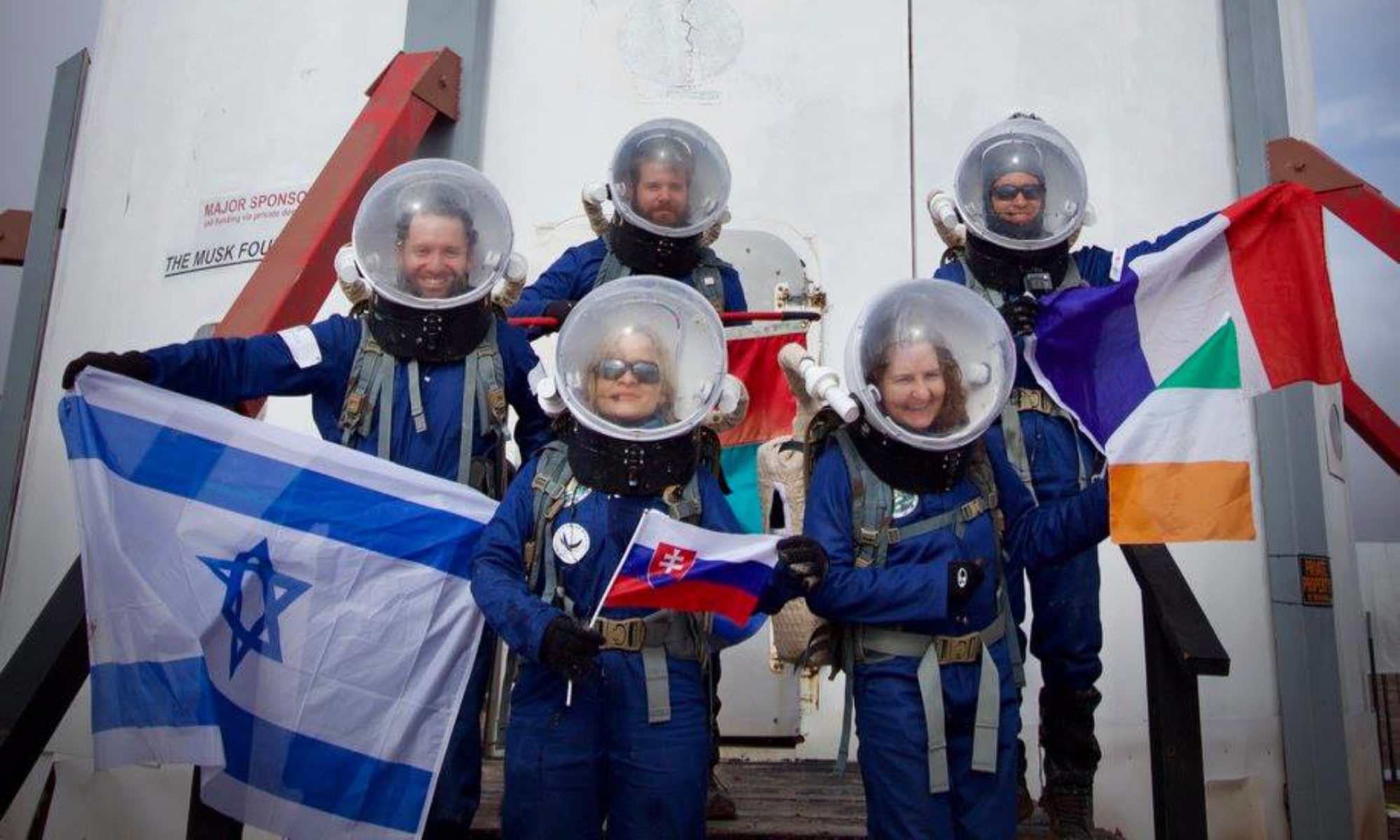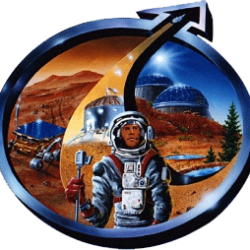[category science-report]
Title: Methodology Extending Mobility Range on Mars
Principal Investigator: David Laude
Current Progress: The project has completed with a close encounter with the Monolith objective by drone after having triangulated its position from two vantage points and placing object on map. From that we plotted a course by rover as close as we could get followed by a short hike up a hill where the drone was launched. This shows the usefulness of the methodology for examination of remote objects further than one would ordinarily expect.
Title: Evaluating Drone Piloting During EVA on Mars
Principal Investigator: David Laude
Current Progress: This project is completed. It has shown what one would expect for piloting a drone in EVA suit. Poorer visibility in EVA can cause temporary loss of drone sighting by both naked eye and FPV display. Displays need to be brighter. In addition, the wearing of gloves impedes fine drone control.
Title: EVA Connectivity Kit
Principal Investigator: Michael Andrews – Crew Engineer
Current Progress: This project is complete! I have been able to demonstrate that a Starlink mini and 20,000mAh battery pack can be easily carried and deployed on an analog EVA. Here are the series of tests I performed over the last few sols:
· On 4/21, I tested the kit before simulation started at the Observatory. I was able to get all crew members to connect to it for use on EVAs. It took a bit longer to connect for the first time in Utah (~5 minutes), and it used 16% of the battery pack within 30 minutes. Download speeds peaked at 86 Mbps and upload speeds peaked at 19.0 Mbps.
· On 4/22, I tested the Starlink inside the Science Dome to see how it would consume battery when unable to connect. I turned it on at 1533 and by 1616, the battery pack had reduced from 84% to 58%. No speed test was conducted.
· On 4/23, I took the kit on its first EVA. The kit was deployed and powered up at 1435, it connected at 1438, and I shut down the unit at 1519. During this time, 27% of the battery pack was consumed. Download speeds peaked at 107 Mbps and upload speeds peaked at 10.4 Mbps.
· On 4/24, I took the kit on a longer EVA. The kit was deployed and powered up at 1451, it connected at 1453, and I shut down the unit at 1551. During this time, 35% of the battery pack was consumed. Download speeds peaked at 129 Mbps and upload speeds peaked at 14.1 Mbps.
Under these four tests, an average expected life of 171 minutes, download speed of 140 Mbps, and upload speed of 14.5 Mbps was observed. I plan to regularly bring this kit on future EVAs to support the crew and my 3D scanning project’s future objectives.
3D Scanning of Samples: This project is on track to complete by the end of our mission. I have been able to collect various samples of shapes, textures, and colors on EVAs. I have learned the software that came along with my Seal scanner known as JMStudio to create 3D files (.obj, .ply, and .stl types) of each sample before returning it to the collection site.
Title: Measuring soil desiccation patterns near the MDRS
Principle investigator: Elena Saavedra Buckley
Current Progress: I’ve collected five diverse soil samples from areas around the MDRS—near Candor Chasma, the turnoff to Galileo Road, the road of Somerville Overlook, off Galileo near Compass Rock, and off Cow Dung near the turnoff to the Sea of Shells. In the field, I took measurements of the soil desiccation sections and their depth within a square foot of the desiccated soil, which is smaller than my proposal’s initial area, since a meter ended up feeling larger than needed to measure. Tomorrow (sol 7), I’ll prepare the soils in my petri dishes and spend the rest of my mission watching and documenting their desiccation patterns as they dry in the GreenHab.
Title: Examining oyster mushroom growth in a Martian greenhouse environment
Principle investigator: Elena Saavedra Buckley
Current Progress: I opened and started my mushroom kit, along with building a humidity tent, in the GreenHab on Sol 0. I’ve been misting its opening at least twice a day, and no mushroom “pins” have formed. While the pins can form at any point between 5 and 10 days, I’m worried they might not appear because the GreenHab has been so hot on occasion, sometimes getting to 106 degrees. We’ll see if it makes any progress.
Title: Essay for Harper’s Magazine
Principal Investigator: Elena Saavedra Buckley
Current Progress: My reporting is going well! Since it encompasses my entire experience at the MDRS, I don’t have any particular updates beyond being grateful to my crewmates for being up for interviews, observation, and discussion.
Title: 100cameras Method: Photography as a Tool to Mitigate Psychological Stress in Space
Principal Investigator:Urban Koi, HSO
Project Progress:MDRS-315 has completed 5 of 8 modules.
Title: Illustrating a Mars Analog Mission as an artist.
Principal Investigator: Tim Gagnon
Project Progress: My goal when assigned was to artistically represent our MDRS mission as an embedded artist.
As of today as we complete week one, I have taken inspiration from the Apollo program to replicate some of the most notable paintings by Alan Bean, Ed Hengevelde and Chris Calle. It was hoped that while on an EVA I would be able to create some rough sketches. Due to the limited visibility of the helmet and limited dexterity of the gloves, that proved impossible. Post mission, I’ll draw inspiration from our crew photo album to create a series of art pieces illustrating MDRS-315.

